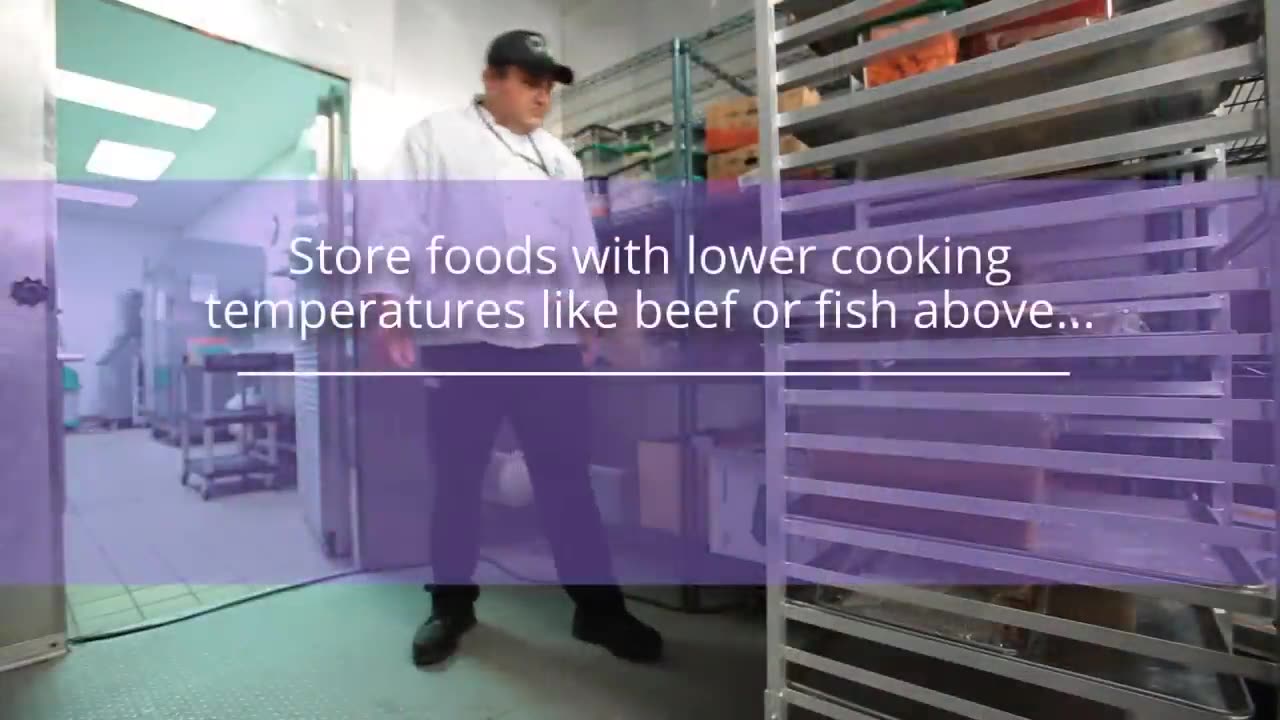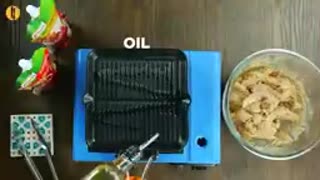Premium Only Content

Basic Food Safety- Chapter 4 'Avoiding Cross Contamination' (English)
### **Basic Food Safety: Chapter 4 - Avoiding Cross-Contamination**
---
#### **What is Cross-Contamination?**
Cross-contamination occurs when harmful bacteria or allergens transfer from one surface, food, or object to another. It is a leading cause of foodborne illness.
#### **Types of Cross-Contamination**
1. **Food-to-Food:** For example, raw meat juices dripping onto ready-to-eat foods.
2. **Equipment-to-Food:** Using the same cutting board or utensils for raw and cooked foods without proper cleaning.
3. **Person-to-Food:** Contaminants from hands, clothing, or personal items transferring to food.
---
#### **Preventing Cross-Contamination**
**1. Separate Raw and Cooked Foods**
- Store raw meat, poultry, and seafood below ready-to-eat foods in refrigerators.
- Use separate cutting boards, knives, and utensils for raw and cooked foods.
**2. Clean and Sanitize Surfaces**
- Wash cutting boards, utensils, and countertops with hot, soapy water after handling raw foods.
- Sanitize tools and surfaces regularly using a food-safe sanitizer.
**3. Practice Good Personal Hygiene**
- Wash hands with soap and water for at least 20 seconds before and after handling food.
- Avoid preparing food when sick or with open wounds.
**4. Use Proper Storage Techniques**
- Keep raw foods in sealed containers to prevent leakage.
- Label and date foods to reduce confusion about handling and storage.
**5. Avoid Cross-Contact (for Allergens)**
- Use dedicated equipment for allergen-specific foods.
- Clearly label allergen-free and allergen-containing items to avoid accidental mixing.
---
#### **Key Tips for Equipment Use**
- **Color-Coded Tools:** Use color-coded cutting boards (e.g., red for raw meat, green for vegetables).
- **Separate Cleaning Supplies:** Use separate sponges or cleaning cloths for raw and ready-to-eat areas.
- **Disposable Gloves:** Change gloves between tasks, especially after handling raw foods.
---
#### **Proper Food Handling Practices**
- Use clean, dry towels for food handling; avoid reusing towels contaminated with raw food juices.
- Transport raw and ready-to-eat foods in separate containers when catering or moving items.
---
#### **Why Avoiding Cross-Contamination is Critical**
Preventing cross-contamination ensures food is safe to eat, protects vulnerable populations (children, elderly, and immunocompromised individuals), and reduces the risk of foodborne illnesses.
By maintaining strict hygiene and organization, cross-contamination can be effectively minimized. Let me know if you'd like further clarification on any section!
-
 1:35
1:35
HSESafetyInformation
6 months agoMutton Chops two ways- baked & grilled Recipe by Food Fusion (Eid Recipe)
67 -
 20:58
20:58
GritsGG
1 day agoProtect the President Challenge on Warzone!
2.01K -
 1:49:07
1:49:07
The Michelle Moore Show
2 days ago'Biden's Immigration Mess, President's Trump Spiritual Cry For Help, English Speaking Truckers Only, Woke CEO's Killing of Conservative Brands, Palantir's Kill Chain' Mark Taylor: The Michelle Moore Show (Aug 25, 2025)
26.8K91 -
 LIVE
LIVE
Lofi Girl
2 years agoSynthwave Radio 🌌 - beats to chill/game to
182 watching -
 2:14:18
2:14:18
The Pascal Show
12 hours ago $0.04 earnedTHEY LIED TO POLICE AGAIN? Jake & Rebecca Haro Have Lost Their Minds! Emmanuel Haro Search Continues
1.66K -
 1:25:52
1:25:52
TruthStream with Joe and Scott
2 days agoSG Sits Down w/ LT From "And We Know": An 80K FT View of Humanity's Great Awakening from 8/22/2025
11.2K16 -
 15:54
15:54
Lacey Mae ASMR
11 hours ago $0.55 earnedASMR For Sleep in 15 Minutes!
5.99K4 -
 3:16:38
3:16:38
Price of Reason
11 hours agoTrump FIRES Fed Governor Lisa Cook! Cracker Barrel CRISIS Continues! James Gunn DCU Woes! Gamescon!
106K7 -
 2:25:01
2:25:01
FreshandFit
6 hours agoTyreek Hill Pays Ex Wife $1 Million in Ongoing Fees From Divorce?!
30.5K3 -
 2:03:46
2:03:46
Inverted World Live
8 hours agoHaunted Dolls Hack Amazon Alexa | Ep. 98
104K2